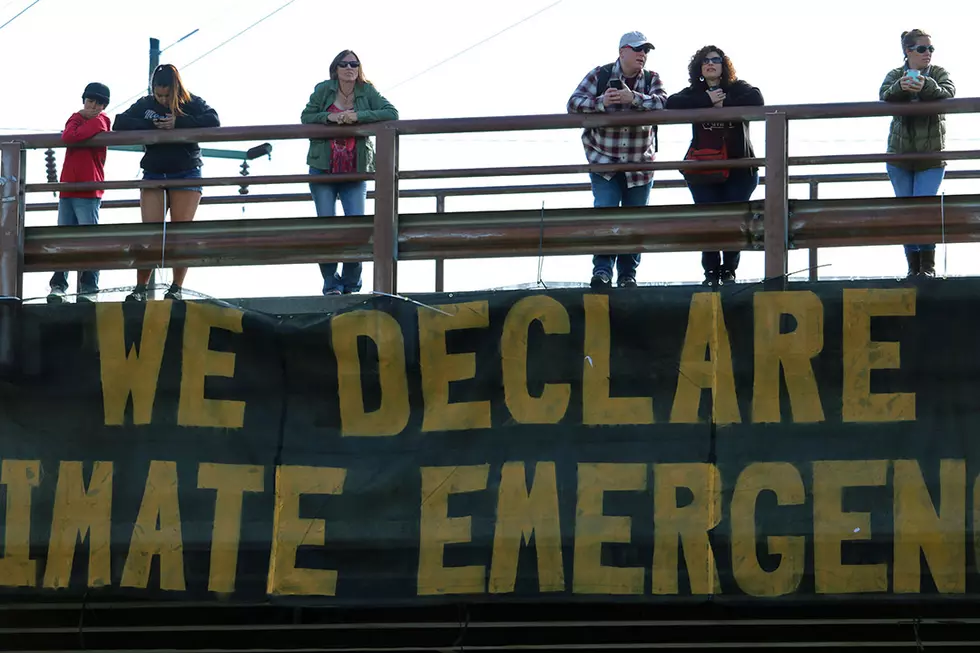
Supreme Court limits EPA’s authority to regulate CO2 emissions; Daines praises
WASHINGTON (CN) — President Biden’s climate agenda got chipped away by the Supreme Court on Friday in a 6-3 ruling.
Sen. Steve Daines quickly praised the decision.
“I’m glad to see the Supreme Court uphold what we’ve known all along—the Obama-era ‘Clean Power Plan’ was a massive overreach,” Daines said. “This ruling right-sizes the authority of the EPA to issue sweeping regulations and realigns the EPA with the original intent of the ‘Clean Air Act.’ At a time when Americans are already facing record high gas prices, it ensures that the Biden administration will not be able to weaponize the EPA to shut down American energy and further its radical anti-energy agenda.”
Writing for the conservative supermajority, Chief Justice John Roberts said the decision to regulate carbon dioxide emissions should be left to Congress, not the Environmental Protection Agency.
“Capping carbon dioxide emissions at a level that will force a nationwide transition away from the use of coal to generate electricity may be a sensible ‘solution to the crisis of the day,’” the Bush appointee wrote. “But it is not plausible that Congress gave EPA the authority to adopt on its own such a regulatory scheme in Section 111(d). A decision of such magnitude and consequence rests with Congress itself, or an agency acting pursuant to a clear delegation from that representative body.”
Justice Elena Kagan headed a dissent by the three Democrat-appointed justices.
“Today, the Court strips the Environmental Protection Agency of the power Congress gave it to respond to ‘the most pressing environmental challenge of our time,’” the Obama appointee wrote.
The case stems from the Clean Power Plan adopted by the EPA in 2015 to regulate carbon dioxide emissions from power plants. Litigation erupted after former President Donald Trump withdrew the plan, with the D.C. Circuit later vacating the repeal and the EPA offering a replacement solution known as the ACE rule, short for Affordable Clean Energy.
Today, the EPA says it no longer wants to use either the Clean Power Plan or ACE rule, but several Republican-led states and coal companies still wanted the high court to intervene. They said the EPA overstepped its authority when it created carbon regulations that would have outsized political and economic impacts. Environmental advocates worried meanwhile that any ruling in the case could curb the government’s authority to fight climate change at a critical moment.
When the justices heard the case in February, the conservative majority seemed skeptical of giving the EPA the authority it needs to fight climate change.
The case gives insight into how the justices will handle issues of administrative authority that come before them. During oral arguments, it appeared the justices had not reached a consensus on the major questions doctrine — a rule that the conservative majority has used to curb administrative authority not explicitly laid out by Congress.
In 1984, the court ruled in Chevron USA Inc. v. National Resources Defense Council Inc. that agencies should get deference on the interpretation of statutes unless decreed by Congress. The exception to that rule is if an agency’s actions are so broad they go beyond its authority. Earlier this term, the court wielded this doctrine to throw out the federal vaccine-or-test mandate for large private employers.
Climate scientists warned the justices in an amicus brief against limiting the government’s ability to respond to climate change. They predict the loss of thousands of lives as well as severe economic and environmental costs if the government is unable to take action.
